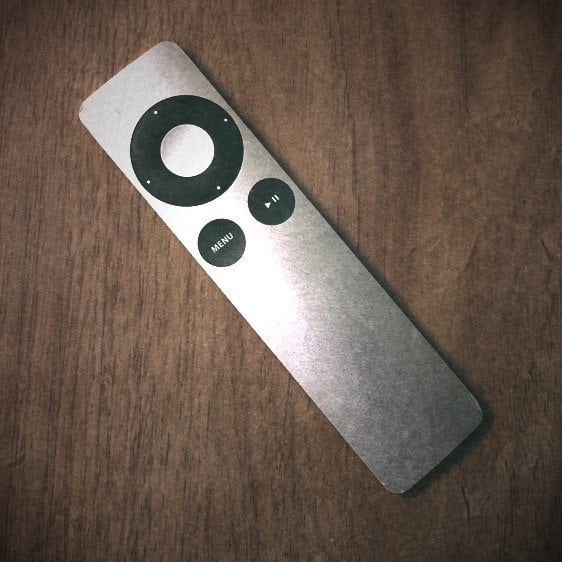
PS REMOTE PLAY APPLE TV SERIES
In 2009, the Los Angeles Web Series Festival was founded. The organization also administers the selection of winners for the Streamy Awards. In 2008, the International Academy of Web Television, headquartered in Los Angeles, formed in order to organize and support television actors, authors, executives, and producers in web series and streaming television. These mobile apps allow users to view provided streaming media on mobile devices which support them. Corresponding apps for mobile devices started to become available via app stores in 2008, but they grew in popularity in the 2010s with the rapid deployment of LTE cellular network.
:quality(90)/article-new/2019/03/ps4-remote-play-2.jpg)
Īccess to television programming has evolved from computer and television access to include mobile devices such as smartphones and tablet computers. Amazon's version of a digital media player, Amazon Fire TV, was not offered to the public until 2014. As of 2015, smart TVs are the only type of middle to high-end television being produced. Smart TVs took over the television market after 2010 and continue to partner with new providers to bring streaming video to even more users. These digital media players have continued to be updated and new generations released. Digital media players also began to become available to the public during this time.
PS REMOTE PLAY APPLE TV TV
The first generation Apple TV was released in 2007 and in 2008 the first generation Roku streaming device was announced. In 2008 Hulu, owned by NBC and Fox, was launched, followed by tv.com in 2009, owned by CBS. Netflix, a website originally created for DVD rentals and sales, began providing streaming content in 2007. Amazon Video began in the United States as Amazon Unbox in 2006, but did not launch worldwide until 2016. A few years later, television networks and other independent services began creating sites where shows and programs could be streamed online.
PS REMOTE PLAY APPLE TV DOWNLOAD
Īpple's iTunes service also began offering select television programs and series in 2005, available for download after direct payment. Karim could not easily find video clips of either event online, which led to the idea of a video sharing site. YouTube co-founder Jawed Karim said the inspiration for YouTube first came from Janet Jackson's role in the 2004 Super Bowl incident, when her breast was exposed during her performance, and later from the 2004 Indian Ocean tsunami. The video-sharing site YouTube was launched in early 2005, allowing users to share illegally posted television programs. The mid-2000s were the beginning of television programs becoming available via the Internet. The increase in streaming services required a new standardization, therefore in 2012, with the contributions of Apple, Netflix, Microsoft, and other companies, Dynamic Adaptive Streaming, known as MPEG-DASH. In addition, HTTP-based adaptive streaming was chosen for important streaming events such as Roland Garros, Wimbledon, Vancouver and London Olympic Games, and many others and on premium on-demand services (Netflix, Amazon Instant Video, etc.). In 2009, Apple launched HTTP Live Streaming (HLS), and Adobe, in 2010, HTTP Dynamic Streaming (HDS). One year later the introduction of HTTP-based adaptive streaming, many companies such as Microsoft and Netflix developed their streaming technology. This new technology would be a significant change for the industry. In 2007, HTTP-based adaptive streaming was introduced by Move Networks.


During the mid-2000s, the streaming media was based on UDP, whereas the basis of the majority of the Internet was HTTP and content delivery networks (CDNs).

The first worldwide live-streaming event was a radio live broadcast of a baseball game between the Seattle Mariners and the New York Yankees streamed by ESPN SportsZone on September 5, 1995. Streaming services started as a result of two major technological developments: MPEG ( motion-compensated DCT) video compression and asymmetric digital subscriber line (ADSL) data transmission. Up until the 1990s, it was not thought possible that a television programme could be squeezed into the limited telecommunication bandwidth of a copper telephone cable to provide a streaming service of acceptable quality, as the required bandwidth of a digital television signal was around 200 Mbit/s, which was 2,000 times greater than the bandwidth of a speech signal over a copper telephone wire. Streaming television stands in contrast to dedicated terrestrial television delivered by over-the-air aerial systems, cable television, and/or satellite television systems. Streaming television is the digital distribution of television content, such as television shows, as streaming media delivered over the Internet. For the Microsoft online service formerly called WebTV, see MSN TV.


 0 kommentar(er)
0 kommentar(er)
